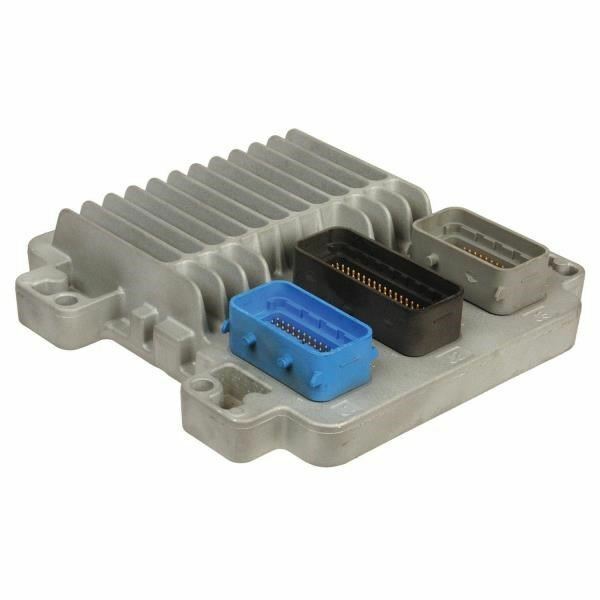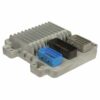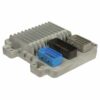Restore Peak Performance to Your GM Vehicle
If you’re dealing with frustrating engine problems in your 2005 GM truck or car—like a persistent Check Engine Light, rough idling, stalling, or poor fuel economy—a failing Engine Control Module (ECM) is often the culprit. As a technician with over two decades of experience under the hood, I’ve seen firsthand how a faulty ECM can create a cascade of hard-to-diagnose issues. This isn’t just a component; it’s the brain of your engine, and when it’s not working correctly, nothing else will. This module is the definitive solution, providing a reliable, pre-programmed replacement that gets you back on the road without the exorbitant cost and hassle of a dealership visit.
We take the guesswork out of the repair. This isn’t just an off-the-shelf part. When you purchase this 2005 Envoy XL ECM, we flash it with the latest official GM software updates specifically for your vehicle. All we need is your Vehicle Identification Number (VIN) at checkout. This critical step ensures that the module communicates perfectly with your vehicle’s systems—from the transmission to the anti-lock brakes—restoring the original factory performance and efficiency. It arrives at your door ready for a straightforward installation.
From the Diagnostic Bay: The Phantom Misfire Case
I remember a 2005 Trailblazer EXT with the 5.3L that came into my shop. The owner had spent a fortune chasing a random misfire on cylinder 3. He’d replaced the plug, wire, coil pack, and even the injector. Still, the misfire would return intermittently, especially under load. Scopes and scanners showed nothing obvious. After exhausting all mechanical possibilities, we turned our attention to the ECM. We found that the injector driver circuit inside the original module was failing intermittently—it wasn’t providing a consistent signal. We swapped in a pre-programmed ECM, and the problem vanished instantly. It’s a classic example of how a bad ECM can mimic other failures, costing you time and money on parts you don’t need.
Is Your GM Vehicle Showing These Symptoms?
A failing ECM can manifest in numerous ways. If you’re experiencing any of the following, this module is the likely solution:
- ✔ Persistent Check Engine Light (CEL)
- ✔ Diagnostic Trouble Codes (DTCs) such as P0601 (Internal Control Module Memory Check Sum Error) or P0606 (ECM/PCM Processor Fault)
- ✔ Engine stalling or cutting out for no reason
- ✔ Rough or unpredictable engine idle
- ✔ Noticeable decrease in fuel mileage
- ✔ Hesitation or stumbling during acceleration
- ✔ Communication errors with scan tools
- ✔ Vehicle won’t start, but the battery and starter are good
A Straightforward Guide to Installation
Installing your new ECM is a job most DIYers can handle in under an hour. While a security relearn procedure may be required after installation (a simple process you can find online for your specific model), the physical swap is easy.
- Safety First: Disconnect the negative terminal from your vehicle’s battery to prevent any electrical shorts.
- Locate the ECM: On most of these vehicles (Envoy, Trailblazer, Rainier), the ECM is located in the engine bay on the driver’s side, often near the fuse box or air filter housing. On the Corvette, it’s on the passenger side.
- Disconnect the Harnesses: Carefully release the locking tabs on the electrical connectors and pull them straight out from the module. Avoid pulling on the wires themselves.
- Remove the Old Module: Unbolt the old ECM from its mounting bracket. There are typically a few bolts holding it in place.
- Install the New Module: Mount your new, pre-programmed ECM onto the bracket and securely fasten the bolts.
- Reconnect Everything: Plug the wiring harnesses back into the new module until they click securely in place. Reconnect the negative battery terminal.
- Perform Security Relearn: Start the vehicle. If it starts and then immediately stalls, you will need to perform the vehicle’s security relearn procedure. This typically involves turning the key to the ‘ON’ position for 10-15 minutes, then off, and repeating two more times.
Verified Vehicle Compatibility
This module is a direct replacement for service numbers 12578554, 12596771, 12597191, 12597883, and 19210071. It is guaranteed to fit the following 2005 models:
- ✔ 2005 Buick Rainier: 5.3L (LH engine)
- ✔ 2005 Chevrolet Corvette: (RH engine compartment)
- ✔ 2005 Chevrolet SSR: (next to air box)
- ✔ 2005 Chevrolet Trailblazer EXT: 5.3L (LH engine)
- ✔ 2005 GMC Envoy: 5.3L (LH engine)
- ✔ 2005 GMC Envoy XL: 5.3L (LH engine)
- ✔ 2005 GMC Envoy XUV: 5.3L (LH engine)
- ✔ 2005 Isuzu Ascender: 5.3L (LH engine)
- ✔ 2005 Pontiac GTO: Main (LH engine)
- ✔ 2005 Saab 9-7x: 8-cylinder (LH engine)
By providing a solution that is already programmed with the latest software for your specific VIN, this 2005 Envoy XL ECM eliminates the most difficult part of the repair process. It’s the most effective way to solve complex electronic issues and restore your vehicle’s reliability.
Frequently Asked Questions
Frequently Asked Questions
Do I need to have this module programmed?
No. We handle all the programming for you before shipment. Simply provide your vehicle’s 17-digit VIN during or after checkout, and it will arrive ready to install with the latest GM software.
What is a security relearn procedure?
This is a simple, built-in GM anti-theft process that syncs the new ECM to your vehicle’s key and security system. It typically requires no tools and involves a sequence of key turns. Instructions are widely available online for your specific model.
Will this fix my check engine light?
If the check engine light is caused by an internal failure of the original ECM (like codes P0601 or P0606), then yes, this part will resolve the issue. It’s crucial to properly diagnose the problem first, as the light can be triggered by many other components.
Is this a direct replacement for my old part?
Yes. This module is a direct-fit replacement for multiple service numbers, including 12597191, 12578554, 12596771, 12597883, and 19210071. It will mount and connect exactly like the original.
Where do I find my VIN?
Your VIN can be found on your vehicle’s registration, insurance card, or on a plate on the driver’s side of the dashboard, visible through the windshield.



